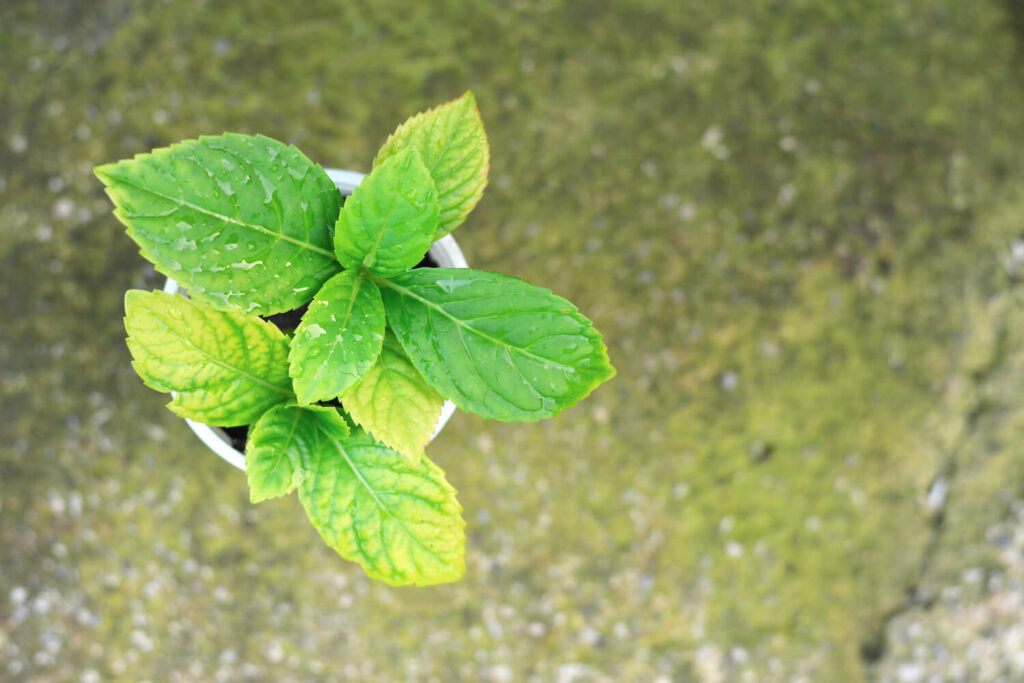How Hydrangea Leaves Turning Yellow can Save You Time, Stress, and Money.
Wiki Article
What Does Hydrangea Leaves Turning Yellow Mean?
Table of ContentsHydrangea Leaves Turning Yellow Fundamentals ExplainedGetting My Hydrangea Leaves Turning Yellow To WorkWhat Does Hydrangea Leaves Turning Yellow Do?Our Hydrangea Leaves Turning Yellow Statements
Large fallen leaves usually look droopy during the afternoon warmth. When they fall short to perk up in the evening or still look shrivelled in the early morning, your plant could be overwatered.Get rid of the plant from the soil and trim out any type of origins that aren't white and swollen (plump). Replant in a new location or function some sand right into the dirt for much better drainage.
Add a bit of distilled water, mix the components, and drain pipes the additional water. Place a p, H screening strip in and wait for a reading.
The most effective way to do that is with dirt changes. Sphagnum moss or peat moss protects against the soil from condensing and betters soil drain while additionally raising the dirt's level of acidity. You can spread sulfur chips in your hydrangea dirt also. The simplest way is to just make use of a fertilizer that helps maintain the appropriate acidity in the soil while additionally feeding the plant.
The 10-Minute Rule for Hydrangea Leaves Turning Yellow
This is one excellent factor to repot houseplants consistently (though there are others, such as root advancement for instance). It is likewise why houseplants require a much stricter fertilizing routine than most outdoor plants. When a hydrangea houseplant is deficient in nutrients, its fallen leaves will certainly be the first to show the signs.
You will certainly likewise require to feed the plant manually and normal periods. When spring begins in March, it's the active growing season for numerous houseplants, consisting of hydrangeas.
The dripline is the location situated under the vegetation that is the outermost far from the facility of the plant. So instead of applying feed to the facility of the plant it is best click here for more to concentrate it mainly in the outer areas of the pot. If you would certainly rather make use of a slow-release plant food such as granular or spike plant food, then cover either type with some dirt after you place them.
7 Easy Facts About Hydrangea Leaves Turning Yellow Described
Although the hydrangea is surprisingly frost-resistant, as soon as temperatures start entering the 20s, the plant is in severe risk. If the temps remain in the reduced 10s, that threat is a lot more severe still. Certainly this is more of a worry about outside plants so if you maintain potted hydrangea outside you should bring them indoors in really winter problems or perhaps think about relocating them inside throughout of the winter season.

A dried hydrangea, A huge issue with several houseplants is root rot. Root rot takes place when you overwater a plant and because it is such a typical trouble (specifically with succulents) numerous houseplant proprietors are fearful of overwatering their plants. Hydrangeas need more watering that many other typical houseplants and can come to be dehydrated when they are underwatered.
Little Known Questions About Hydrangea Leaves Turning Yellow.
They require copious amounts of water, however they also despise to grow in standing water or water soaked dirt. Be definitely sure that your hydrangea is dried out due to an absence of water and not because of it be given way too much water (extra on this later). Understand before you grab that watering can that an overwatered hydrangea displays the same signs as an underwatered one! Though overwatering is a serious issue if you cut corners on its water demands even a little, your hydrangea will be quick to reveal it., you will rapidly inform if the plant requires water. To obtain your hydrangea watering habits on the appropriate track, you require to be mindful concerning the moisture degrees in its dirt.
When you eliminate your finger from damp soil it will have tiny quantities of soil deposit adhered to it. Dry soil will certainly mean your finger comes out tidy or with dry soil that is easily surprised. If it's damp, and the plant has yellow leaves after that the plant has likely been overwatered and you will certainly need to follow the advice given in the section below.
Report this wiki page